The Unique (and Surprisingly Wet) Biodiversity of the Sonoran Desert
In Arizona, the country’s most diverse desert teems with kaleidoscopic spring flowers, charming desert tortoises, and the famous saguaro cactus.
The Sonoran desert is something of an anomaly; it gets a surprising amount of rain each year, usually between 10 and 12 inches in its wettest areas. The desert’s roughly 100,000 square miles stretch from the southern reaches of Mexico’s Baja Peninsula to the heart of Arizona, where its biodiversity flourishes. The Sonoran Desert is thought to be the most biologically diverse in North America, with over 2,000 species of plant and over 550 species of animal.
Much of this biodiversity comes from that rain, which falls more heavily in Arizona than it does in the drier southern and western regions, making it the best place to experience the region’s abundance. The seasons of the Sonoran desert include two rainy seasons: “wet summer” (July to mid-September), and winter (December to February). December rains bring an always-changing permutation of spring flowers, and summer rains bring lush fall vegetation. The expansive, verdant plant life also supports the wide array of animals that live in the desert, from desert tortoises to the ever-popular roadrunner (yes, like the one in Looney Tunes).

Notably, the Sonoran desert is the only place where the saguaro cactus grows natively. Tree-like, they grow up to 40 feet tall with arms that reach up to the sky like a friend waving to you. Imagine a clip-art cactus, in three dimensions: you’re likely picturing a saguaro.
“The saguaro has tremendous cultural value, and it’s fascinating biologically,” explains Don Swann, a biologist at Arizona’s Saguaro National Park. It’s the tallest plant in the Sonoran, and can live for upwards of 200 years, though it grows at a glacial pace: a one-inch-tall cactus might be ten years old, Swann explains, and one that has reached a foot tall might be hitting the ripe age of 20. It begins reproducing at 50 or 70 years old, and has long been an important food plant to the Tohono O’odham people, who have lived in the area for thousands of years; its bright-fuschia fruit is incredibly nutritious.
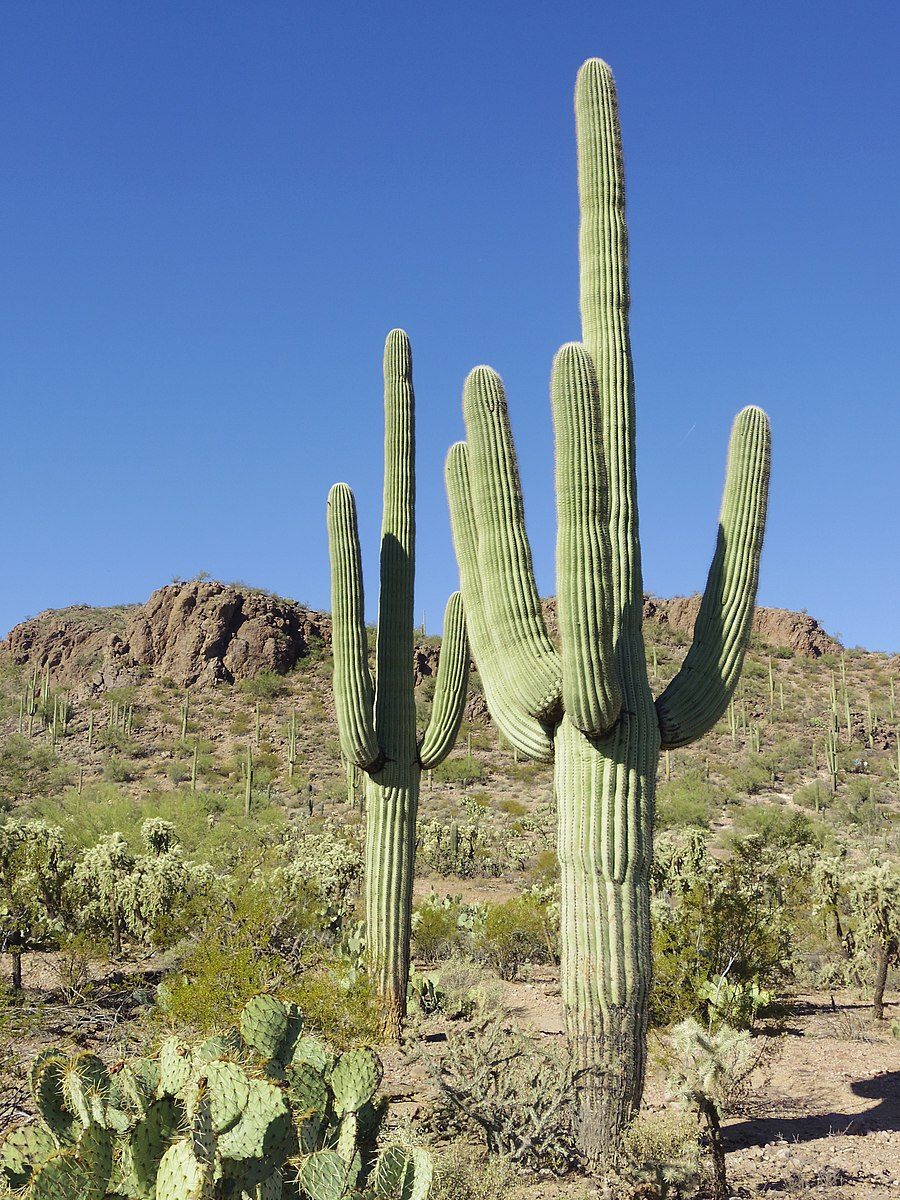
The saguaro and its other cactus brethren, like the fuzzy, coral-shaped cholla cactus and the stout Southwestern Barrel have their own seasons. They begin to bloom in late April and early May, when birds begin to nest in the saguaros’ sky-high flowers. (Other birds perch on its arms year-round; woodpeckers often peck holes into its flesh.) The fruit ripens in July, when their buds pop for nearby birds to graze on. The fruit not gobbled up by birds or harvested by local humans falls to the ground, becoming food for those humble animals who cannot fly, like tortoises, deer, foxes, and the pig-like javelina.

“People who live here just love this plant,” Swann explains, “in part because they have those branches that look like arms, and sometimes have growth forms that look like heads, so they do look like people—they do have a visceral connection to people. A landscape of saguaros is just so stunning.”
The Saguaro also develops important relationships with other plants. Take the Palo Verde, Mesquite, and Ironwood trees, which serve as “nurse trees” to the saguaro while it grows. When the saguaro is still tiny, it can’t store very much water, and it’s very susceptible to drought. “The trees protect them from the heat in the summer, and the cold in the winter,” Swann explains. “The saguaros are most commonly found under these trees, so we think there must be an underground connection. There’s a lot going on underground in the desert—it’s hot above ground, and so a lot of the action is in the roots.” When it rains, plants compete over who can soak up the limited water available to their roots.
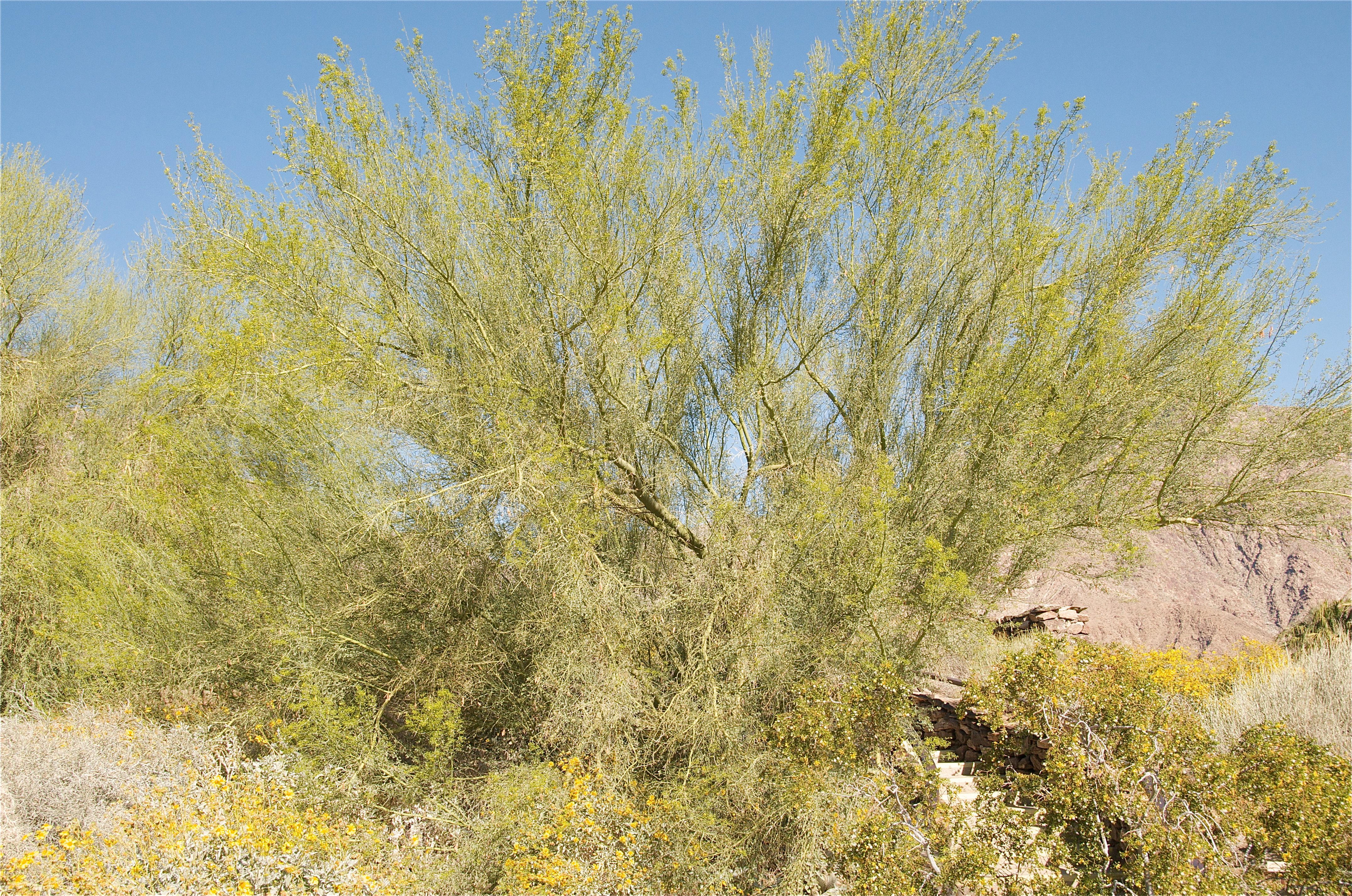
Animals also spend a lot of time below ground, often retreating to burrows or caves during the hottest part of the days and the coldest part of the nights. “Just about every animal goes underground in one way or another,” Swann says. “Desert tortoises, for example, are only active a small part of their lives—most of the time, they’re tucked underground in deep burrows where humidity and temperature are more constant.” Like cacti, Desert Tortoises are experts at storing water—so much so that they’ve earned the nickname of “walking saguaros”. When they hear the rains come, they emerge from their burrows and find flat stretches of rock where they can hoover the rain directly through their noses. Once rehydrated, they expel waste they’ve been carrying around since the last rain, and the cycle begins again.
Locals also anticipate the rains, as well as the changing seasons of the desert and the benchmarks they promise: cactus flowers in spring, rains to break the scalding summer heat, wildflowers coloring the landscape like a confetti bomb. Unlike the rest of the country, the Sonoran desert has five, not four, annual seasons: spring, hot summer, wet summer, fall, and winter. Each has its charms, and its natural wonders, to explore.
Winter (November to January)
Winter in Arizona’s desert is quiet, and temperate during the days, with much colder nights. Many animals make themselves scarce during this time. “Even if they’re not technically hibernating, they go dormant,” Swann explains. You’re unlikely to see lizards, snakes, and tortoises in the winter months; mammals that are more nocturnal during summer months are more “day-active” in the winter, changing their habits to take advantage of the most pleasant times of day.
Winter is also a wet season, though erratically so. The winter rains are less predictable, Swann says, as they are tied to long-term weather patterns coming off the Pacific Ocean.

Spring (February to Mid-April)
Warmer days arrive in spring, as does the possibility of floral abundance. Swann, who grew up in the Northeast, continues to be surprised by the variability in the spring blooms of Arizona. “If you live in the North, spring comes and the seeds germinate—it’s pretty predictable,” he explains. “Whereas in the desert here, germination is a combination of temperature and precipitation. Some seeds, for example, will only germinate when there’s a rain event in the fall, where it’s not as cold as winter. The years where we have really explosive, beautiful flower blooms in the spring are quite often the result of fall rain.” If significant rains don’t fall until winter, the spring flowers will likely be different from those that bloom after fall rains. And if the winter and spring are both wet, Swann says, flowers about in March.
Dry Summer (Mid April to Mid July)
“By mid april, winter visitors are leaving because it’s starting to get pretty warm,” Swann says of the intense summer heat. Temperatures in June and July can easily reach 100 degrees. It’s a dry heat—the region’s driest months—but it can still be incredibly overwhelming during the day, with relief coming at night. Certain plants, like the desert zinnia, will go dormant during dry periods, the way that snakes will go dormant in the winter. Swann points out it’s important to avoid hiking during the day in these months.
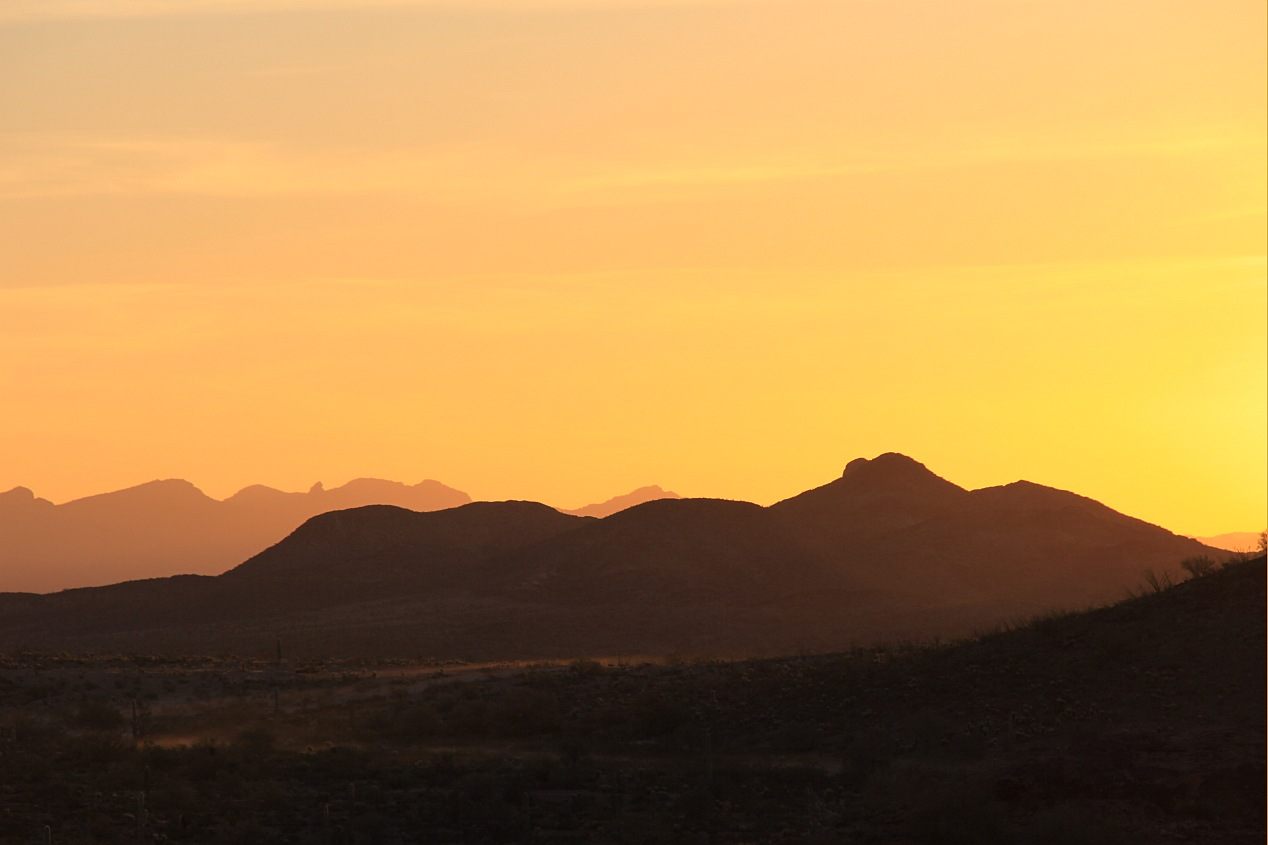
Wet Summer (July to Mid September)
In the dry summer, Swann says, “All we talk about is the summer rains—everybody looks forward to it.” They often arrive very dramatically in July—the clouds will begin to build up, and eventually explode into energetic thunderstorms, where a lot of rain can fall in short periods of time. While it also increases the humidity during the hot months, “the afternoon cloud buildup keeps the days a little cooler, and the rain makes the days more pleasant,” Swann says.
Animals will come out for a drink, and certain plants come back from the dead. The ocotillo, for example, will grow leaves when it rains; when the rain stops, the leaves will shrivel up and fall off.
Fall (September to October)
Fall can be incredibly green, or more drab, depending on the level of rain that falls at its beginning. This year has been quite wet, and the desert is pleasantly verdant, Swann says. It’s an easy season, with pleasant shoulder-season temperatures that visitors and animals alike enjoy for outdoor activities.
This post is sponsored by Visit Arizona. Click here to explore more.
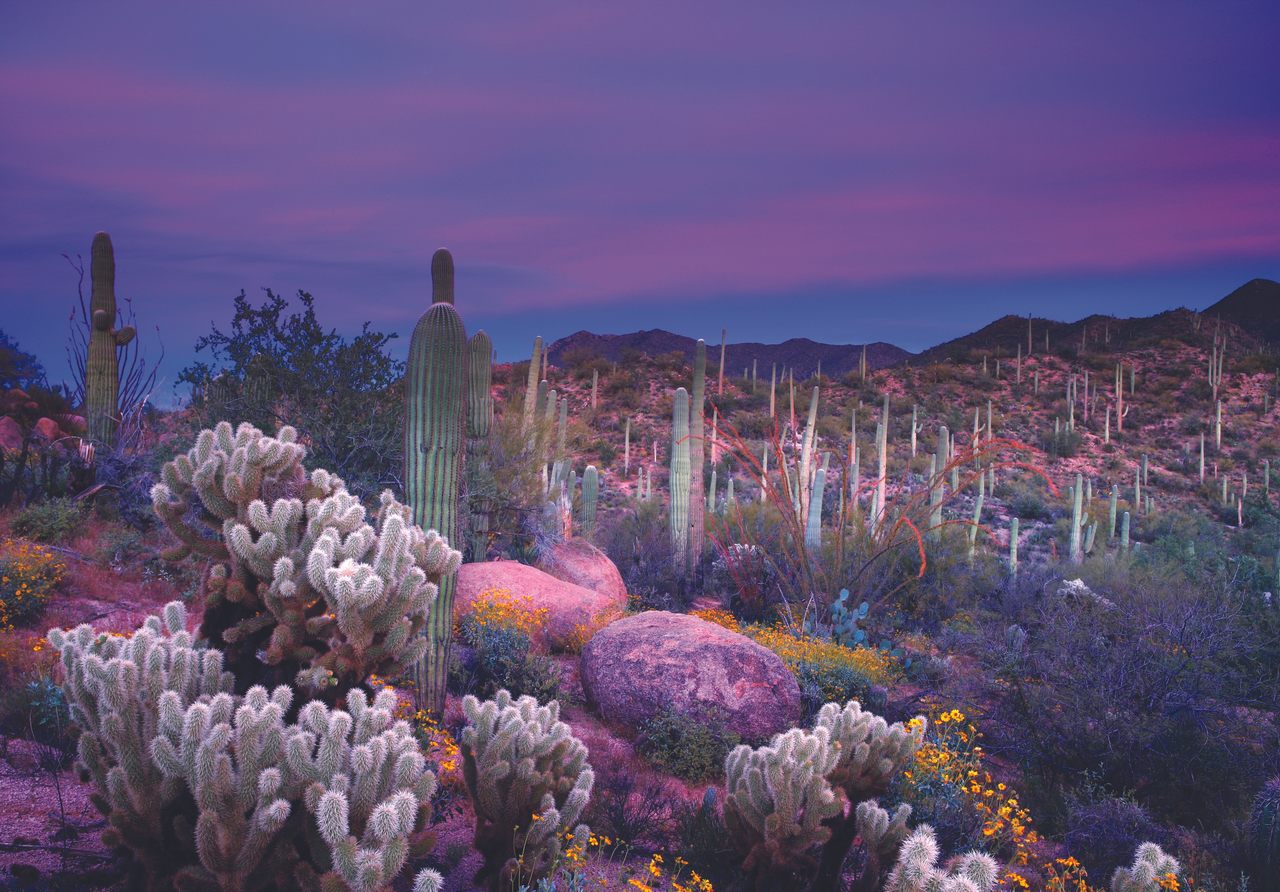






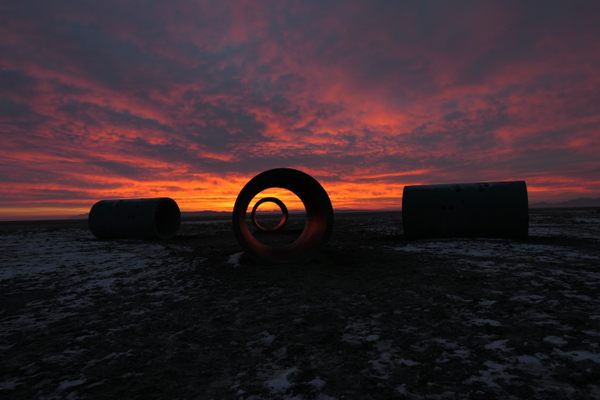










Follow us on Twitter to get the latest on the world's hidden wonders.
Like us on Facebook to get the latest on the world's hidden wonders.
Follow us on Twitter Like us on Facebook